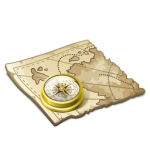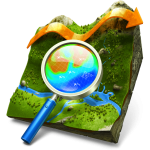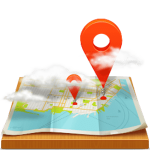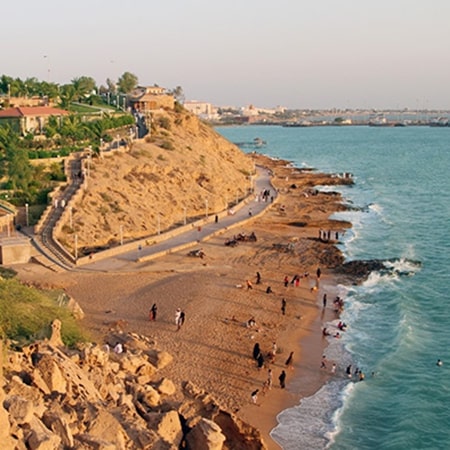
Gheshm

Gheshm is the biggest island of Iran and Persian Gulf that is located in Strait of Hormuz. The name of this island in the Sassanid era was Abarkavan. Gheshm is a quiet and peaceful island that you can walk on its soft sandy beach for hours this natural and virgin beauty has made this region one of the most popular areas for living and working in Iran.
In this city you won’t find any traffic and no glamor of the shopping centers and showcases that may hurt your eyes no expensive entertainments. Gheshm is the place of relaxing.
Most of the people with the hearing of the free trade zones, will think about Kish, Chabahar, Aras, Astara and … and they think that the tourist’s destination for their travels would be these places. Hotels, tourist resorts and more facilities are in these places and every year many investments would occur on them but the statistics of customs showed that among these places there is another quiet competitor has stolen the competition from them.
Gheshm, the free trade zone with low facilities has been registered 1 million and 200 thousand incoming passengers that just comes from the airways and by the difference of 1 million and 300 thousand passengers is ahead from its competitor Kish and stand on the first place.
Traveling to Gheshm will contains wonderful memories for you such as stars valley, Hormuz colorful soils, Hera Jungles and Naz island and Hengam Dolphins and kind people.
History

Qeshm Island, due to its location in the Strait of Hormuz and its adjacent to the islands of Hormuz, Lark, Hengam, Tong bozorg and tong koochak, Abu Musa, is from the earliest times of history to this day, has a special geographical position and strategic importance to the observers and gatekeepers of the Persian Gulf.
The importance geostrategic application of Qeshm Island in modern times has not been issued only with modern weapons and equipment. Instead, in the history of the human societies of this region, the Qeshm Island has always had a special military and geopolitical position of any age, and the navy powers have used the special geostrategic of the island in most historical periods.
Qeshm had a very special position and strategic importance for the Elamites because the Elamites monitored the crossing sailors from the Strait of Hormuz to the territory of the Elamites. Therefore, in some of the small archaeological excavations carried out on Qeshm Island, we found that most of the obtained works are related to the Elamite period.
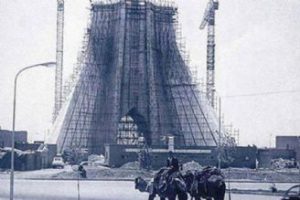

The Sumerians (from the Central Asian tribes) continually threatened by the Elamites. The Sumerians came to the Persian Gulf about 5,000 years ago and with the defeat of the nomads, eventually settled down on the Qeshm Island with Elamites, and today the traces and remains of this race are particularly visible in the form and appearance of the people of Qeshm.
During the rule of the Assyrians, the Assyrians was benefited a great deal of Qeshm geostrategic. Of course, before the Assyrians, the Babylonians, who had a mighty naval force and could not defeat the Elamites in the land, repeatedly raided Qeshm Island, but the specific conditions of Qeshm helped to defeat them.
During the Medes, cattle breeding and raising camels, horses, donkeys, sheep, goats, and pearl fish and oysters were spread by ancient methods in Qeshm Island, and the anglers of the island were fishing 200 species of fish. The wickerwork, shipwreck and weaving of sailboats and shipping also spread on the island. Probably the ancient works of the temples of the cemetery of the Khorbs caves started on the Qeshm Island since the Medes.
Achaemenid government in the year 571 BC, at the time of Darius, for a large naval attack on Sindh, collected many proficient seaman and built many ships. This navy commanded by a Greek named Skylas went to Oman sea and conquered Punjab and Sindh and reached that gold lands. By digging the Suez Canal in the time of Darius and connecting the Mediterranean to the Red Sea, shipping in the Persian Gulf was flourishing more and more, and the importance of the Strait of Hormuz and the geostrategic of Qeshm Island also had a special status. In particular, Qeshm Island was the source for moving around Africa, and Qeshm Island was at that time a major shipping center built for the first time in the world.
During the Sassanid era, the aggression of the Hijaz Arabs intensified to the ports and coastlines of Iran. However, the Hebrew Arabs never succeeded in capturing Qeshm. Shahpour II Sassanid formed a powerful navy and used the position of Qeshm in best ways. A few centuries later, during the time of Anoushirvan, which the Iranian fleet intended to seize the Sarandib Island, Qeshm Island again became the center of the gathering of armored vehicles and fleets. In addition, the Qeshm Island an intermediary harbor and a gathering center of the army before moving to the target for the incursion.
Although Madaen fell in 637 AD and in 640 AD, the Islamic forces captured Khuzestan, but at sea, the commander of the Islamic Fleet practically defeated the Sassanid navy. As a result, Zoroastrians who do not believe in Islam are mostly went to Qeshm Island, and Qeshm Island got a safe place for refugees for Zoroastrians, and they have been able to fight for more than a century against the Islamic armies, who have been providing naval forces, using a special geostrategic Qeshm Island resist until they began to build a ship in Qeshm and the group migrated to Gujarat of India. The works of numerous Zoroastrian fire temples left in Qeshm represent the same historical period.
After the Islamist armies conquered the Qeshm Island, Qeshm mariners emigrated or converted to Islam. Qeshm retained its importance in controlling the Strait of Hormuz.
The main language of the people of Qeshm, like all people living in the ports and the south coast of the country and other islands, is Farsi, but they speak in a dialect that is understandable to all people and travelers that traveling to the island. The local and traditional accent of Qeshm people in their towns and villages is almost the same. In general, local accent is a mixture of Arabic, Persian, Bandari, Hindi and English.
The people of Qeshm Island (natives) are Muslims who follow the Sunni religion (Shafe’ie). Religion among the people of this island has a special place and encourages their children from childhood to pray, fast and learn the Qur’an.
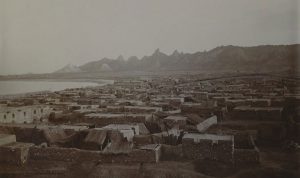

After the Iran-Iraq war, the growth of Tehran’s civilization was restored. In that time, the mayor of Tehran, several activities took place in urban civil engineering. The subway of Tehran during this period was extensive excavation and projects such as Navab Safavi Highway project were completed in this period. the Tohid tunnel, the Javadie Bridge and the Milad Tower opened after revolution of Islamic republic of Iran.
Tehran in the divisions of the old country and before it became the capital of Iran, was a part of the historical city of Ray, so the dialect of the people of this city is also from the branches of the dialect of Raji or Razi, the same language as the Pahlavi branch, and in the north, northwest, and the Maghreb and the south Iran has been popular. In Tehran, people are talking in Persian. Most people in this city have a Persian language with a Tehran dialect.
The inhabitants of the Tehran metropolis are among those who are surrounded by Iran, with their beliefs, cultures, languages and religions, and live in a national context. The existence of followers of various divine religions, including Christians, Jews and Zoroastrians, who live and practice peacefully along with the majority of Muslims in the city, is an indication of the formation of a modern and dynamic society.
Geographies

Bandar Abbas bound the island to the north, the center of the khamir and part of Bandar-Lengeh, from the northeast to the island of Hormuz, from the east to the island of Lark, from the south to the island, and from the southwest to the Abu Musa and tong-e-bozorg and tong-e-Kuchak. The nearest port on the main coast of the country is Qeshm Island, Bandar Abbas, its distance from Sarbandar Qeshm is 10/8 nautical miles (20 km).
The area of the island is 1,491 square kilometers, about 2.5 times the size of the second largest Gulf Island, Bahrain. The total length of Qeshm Island is 120 km and the average width of Qeshm Island is 11 km.
In 1390, the city was divided into three parts: central, Shahab, and Hormuz, that are seven districts. Qeshm is located at the eastern point of the island, and although this city has no geometric centrality over the whole island, due to its strategic position (Widespread view to the south, north and east, the sight of the Strait of Hormuz, proximity to Bandar Abbas, etc.) has long been of importance and is considered the main settlement of the island.
The choice of Qeshm as the main base for the development of Qeshm commercial free trade zone has added to the importance of this city.
Location of the city
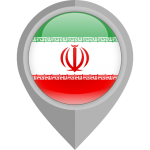
According to the census of 1395, the total population of Qeshm Island is 148, 993, of which 66, 801 are in urban areas and 82, 160 are in rural areas.
Population
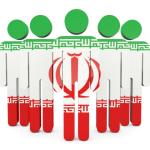
Qeshm is in the group of warm and humid areas, while relative humidity is high in Qeshm. The air pressure in Qeshm is between 1015 till 1018 mmHg, which in summer due to the high temperature, the air pressure is less than 1000 mmHg.
The average annual temperature in Qeshm Island is about 26 ° C, with an average maximum and minimum daily temperature of 33 ° C and 18 ° C, respectively. The seasonal temperature difference is very high. The warmest periods are 10 July to 10 September and the coldest months are January & February. At Qeshm Island, maximum and minimum absolute temperatures have been recorded at 46 and 16 degrees Celsius.
Weather

Places

Gallery



